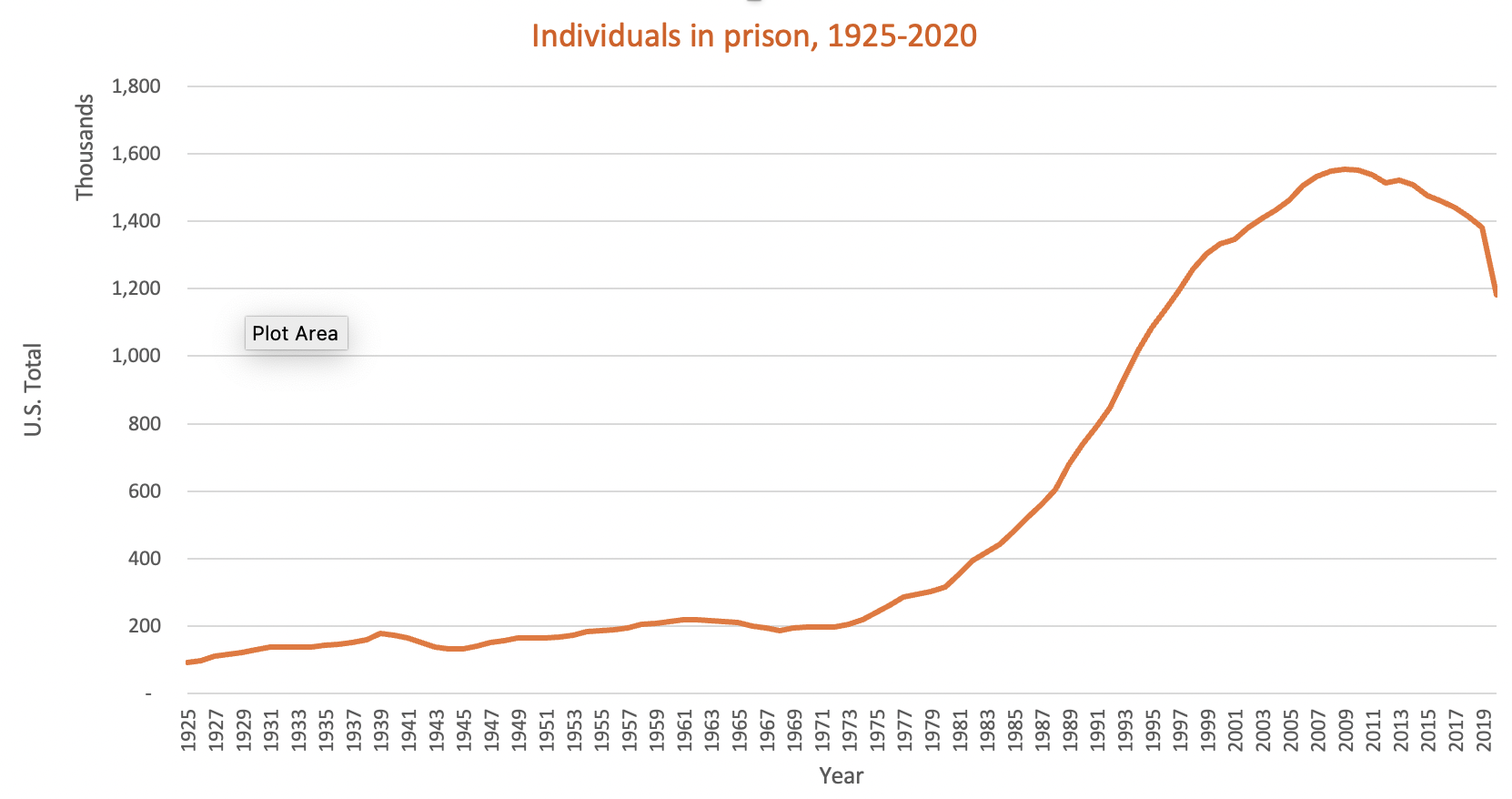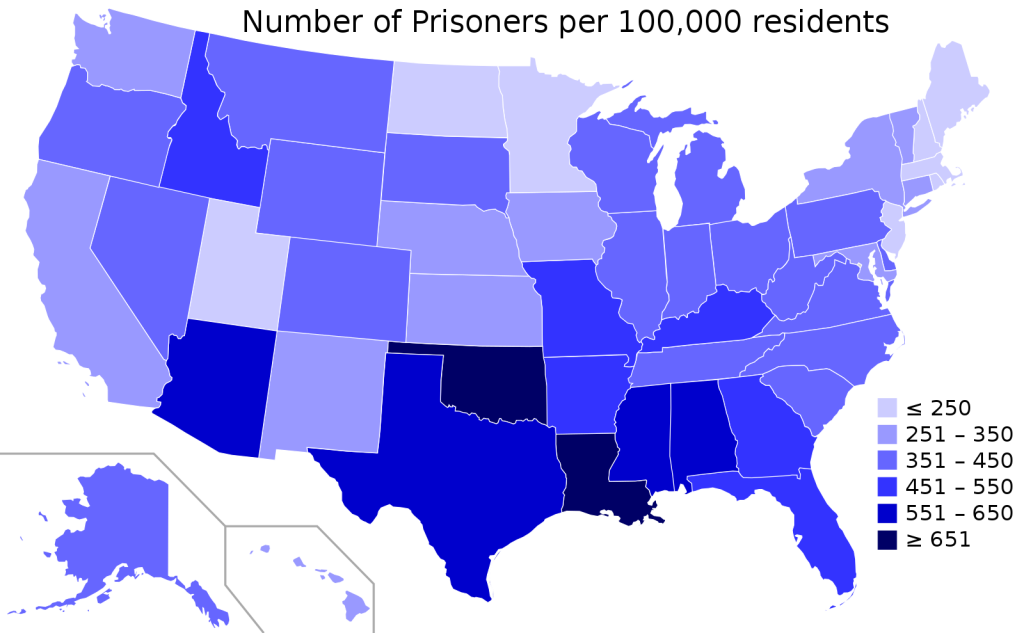10.1 Current Issues: Mass Incarceration
David Carter and Brandon Hamann
Feeling safe and secure in one’s person and home is arguably one of the most discussed priorities in our nation today. Our fear of crime influences how we think, vote, and act day-to-day. It also shapes how we punish people who are convicted of violating the law. In part, punishment reflects the will of the people, which is then carried out by legislators, and converted into sentencing practices. However, has our desire to feel safe led to counterproductive policies? In other words, have these policies made us less safe? Moreover, has a natural fear of crime been exploited by politicians who try to “out-tough” their opponents? This final section attempts to reflect on how our collective fears have created a system of mass incarceration that has paradoxically made some communities less safe and secure, even as crime on a national scale has fallen dramatically since the 1990s. While this text has focused consistently on fear of crime, the influence of persistent racism (periodically inflamed by the Civil Rights Movement, economic recession, and the election of the nation’s first Black president) has undoubtedly contributed to the wars on crime, drugs, and immigration that gave rise to mass incarceration.
To give us a clear understanding about America’s use of prisons, here is a comparison of the U.S. rate of incarceration with that of other countries around the world. As one can see here, America uses incarceration quite extensively; in fact, one might argue that we are the “best” at it.
The United States wasn’t always this punitive. As we have discussed, our orientation toward punishment has evolved over time (even if it hasn’t changed dramatically in the last 40 years. In the 1970s, there was a confluence of events that put the U.S. on a path toward mass incarceration – a path that has had lasting effects, as can be seen in the graph below. Below, you can see when the expansion of the correctional system began.

As you can see from the chart above, the uptick in imprisonment dates to the early 1970s. In this periods, the U.S. was in the midst of a period of civil unrest (relating to the Vietnam War, the Civil Rights Movement, and the Women’s Liberation Movement, among other social justice movements), while crime had begun to tick up in the previous decade. Many politicians exploited middle class, white Americans’ unease with such developments, eagerly conflating the rise in street crime with protests, at a time when the economy was increasingly precarious. Elected to office, such officials sponsored “get-tough” policies – such as the War on Drugs – while other factors also conspired to increase the prison population. Notably, the anti-psychiatry movement and the government’s embrace of deinstitutionalization left many individuals suffering severe mental illness with nowhere to turn. The next several sections will explore the diverse policies that conspired to create mass incarceration.
Not Just a National Problem
The increase in the national incarceration rate is not only a problem of the federal government. Many states have also seen an increase in the incarceration of their respective populations in recent history. Particularly in the South, where in some instances prison populations are triple compared to that of other states.

Many factors can be attributed to the increase in prison populations since the Civil Rights Movement of the 1960s as previously discussed. The War on Drugs is certainly a major contributor. However, what recent studies have found is that the overwhelming majority of people being held in jails, prisons, and other detention facilities are first-time, non-violent offenders who could be subjected to alternative means of adjudication while awaiting their day in court (bail, bond, diversion, etc.). There is also evidence that suggests the population of incarcerated individuals in Louisiana, for example, is overrepresented by people of color. Louisiana is 62% white, and 33% black, however it’s prison population is the opposite: 64% black, and 34% white (Kanu, 2023).
For more information about the Mass Incarceration problem in Louisiana, go here.

